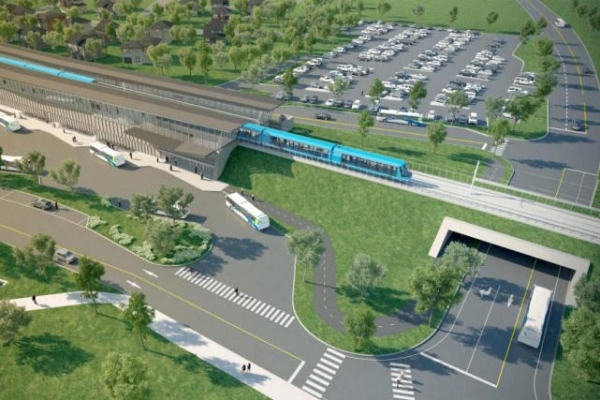With the sweltering heat of a Friday afternoon combined with yet another traffic jam on the Champlain bridge, almost any price might be considered worth paying for quicker and more accessible transportation. The Réseau express métropolitain (REM), also known as the Montreal light-rail network, aims to provide a solution to Montreal’s congestion by December 2020.
With a projected budget of $6.3 billion, the REM will be a 67-kilometre fully automated public electric rail system linking the South Shore, the West Island, the airport, the North Shore, the Deux-Montagnes line, and downtown Montreal. Proponents toute the project for its environmental benefits, although members of the public, architectural experts, and environmentalists have critiqued the haste with which it has been pushed through approval and implementation.
Nonetheless, the consensus is that building some form of transit system is important for the long-term energy sustainability of cities. A report also suggests that an increased reliance on public transit could help Quebec’s economy by allowing the province to reallocate funds from oil consumption to job creation.
“Usually, public transport, whether it is a bus or a tramway, uses less energy than cars,” Richard Shearmur, Director of the School of Urban Planning, said.
However, as much as public transportation might appear to be an obvious solution to reducing carbon emissions, building a new transit system still has environmental repercussions. As a rule of thumb, steps to make transportation more efficient tend to encourage more of it.
“Every study that has ever looked at traffic over the last seventy years has shown that when there is extra road capacity, new people actually get into their cars,” Shearmur said. “People that wouldn’t usually drive into town [tend] to come into the city.”
Furthermore, in addition to the debate among experts over the increased carbon emissions caused by transit systems, environmentalists question whether the municipal government has done its due diligence when considering the ecological impact of the REM project in particular. The project would involve cutting 20 hectares of trees and shrubs containing the largest heron nesting colony on the West Island.
“[The REM project] has been very divisive because it has been imposed [on the city] rather than consulted about,” Shearmur said. “What we need is legitimate consultations [between environmental experts and city planners] where real alternatives are considered.”
Proper consultation is a crucial part of any large-scale project with implications for the surrounding wildlife and their habitats. Critics suggest that the REM project has not undergone adequate analysis. The province’s environmental review agency, the Bureau d’audiences publiques sur l’environnement (BAPE), concluded in Jan. 2017 that the project lacks key information on its costs and environmental effects while contributing little to public transport availability.
“[There] needs to be qualified, non-political people [in] a balanced committee to make a decision,” Avi Friedman, professor in the School of Architecture, said.
In response to the outcry from environmentalists about a lack of appropriate consultation, the city of Montreal promises to plant 250,000 trees to offset the CO2 emissions of this project, 100,000 of which have already been planted. Nevertheless, environmentalists are in the process of appealing to the Quebec courts to halt the process in order to allow for ‘meaningful’ hearings on the project.









